| Surya | |
|---|---|
|
The Sun God of Light, Day and Wisdom | |
 Surya (c. 1940) | |
| Other names | Adithya, Bhaskara, Divakara |
| Affiliation | Deva, Navagraha, Adityas |
| Abode | Suryaloka |
| Planet | Sun |
| Mantra |
"Om Mitraya Namaha, Om Ravaye Namah, Om Suryaya Namaha, Om Bhanave Namaha, Om Punshne Namaha, Om Hiranya Garbhaya Namaha, Om Marichaye Namaha, Om Adityaya Namaha, Om Savitre Namaha, Om Arkaya Namaha, Om Bhaskaraya Namaha |
| Weapon | Wand |
| Day | Sunday |
| Number | One (1) |
| Mount |
Chariot drawn by seven horses Charioteer: Aru?a |
| Personal information | |
| Consort | Chhaya,saranyu/sandhya and Ratri |
| Children | Shraddhadeva Manu, Yama, Yamuna, Shani, Tapati, Bhadra, Karna, Sugriv |
| Parents |
|
| Greek equivalent | Helios |
| Roman equivalent | Apollo / Sol |
Surya (/?su?ri?/; Sanskrit: ?????, IAST: ‘'S?rya’') is a Sanskrit word that means the Sun. Synonyms of Surya in ancient Indian literature include Aditya, Arka, Bh?nu, Savitru, Pushana, Ravi, M?rtanda, Mitra and Vivasv?na.
Surya also connotes the solar deity in Hinduism, particularly in the Saura tradition found in states such as Rajasthan, Gujarat, Madhya Pradesh, Bihar, Uttar Pradesh, Jharkhand and Odisha. Surya is one of the five deities considered as equivalent aspects and means to realizing Brahman in the Smarta Tradition. Surya's iconography is often depicted riding a chariot harnessed by horses, often seven in number which represent the seven colour rays of the rainbow. In medieval Hinduism, Surya is also an epithet for the major Hindu gods Shiva, Brahma and Vishnu. In some ancient texts and arts, Surya is presented syncretically with Indra, Ganesha or others. Surya as a deity is also found in the arts and literature of Buddhism and Jainism.
Surya is one of the nine heavenly "planets" (Navagraha) in the zodiac system of Hindu astrology. Surya or Ravi is the basis of Ravivara, or Sunday, in the Hindu calendar. Major festivals and pilgrimages in reverence of Surya include Makara Sankranti, Pongal, Ratha Sapthami, Chath puja and Kumbha Mela.
Contents
Texts and history
Vedic
The oldest surviving Vedic hymns, such as the hymn 1.115 of the Rigveda, mention S?rya with particular reverence for the "rising sun” and its symbolism as dispeller of darkness, one who empowers knowledge, the good and all life. However, the usage is context specific. In some hymns, the word Surya simply means sun as an inanimate object, a stone or a gem in the sky (Rigvedic hymns 5.47, 6.51 and 7.63); while in others it refers to a personified deity.
The Vedas assert Sun (Surya) to be the creator of the material universe (Prakriti). In the layers of Vedic texts, Surya is one of the several trinities along with either Agni or Varuna and either Vayu or Indra, which are presented as an equivalent icon and aspect of the Hindu metaphysical concept called the Brahman.
In the Brahmanas layer of Vedic literature, Surya appears with Agni (fire god) in the same hymns. Surya is revered for the day, while Agni for its role during the night. The idea evolves, states Kapila Vatsyayan, where Surya is stated to be Agni as the first principle and the seed of the universe. It is in the Brahmanas layer of the Vedas, and the Upanishads that Surya is explicitly linked to the power of sight, to visual perception and knowledge. He is then interiorized to be the eye as ancient Hindu sages suggested abandonment of external rituals to gods in favor of internal reflections and meditation of gods within, in one's journey to realize the Atman (soul, self) within, in texts such as the Brihadaranyaka Upanishad, Chandogya Upanishad, Kaushitaki Upanishad and others.
Epics
The Mahabharata epic opens its chapter on Surya that reverentially calls him as the "eye of the universe, soul of all existence, origin of all life, goal of the Samkhyas and Yogis, and symbolism for freedom and spiritual emancipation.
In the Mahabharata, Karna is the son of Surya and unmarried princess Kunti. The epic describes Kunti's trauma as an unmarried mother, then abandonment of Karna, followed by her lifelong grief. Baby Karna is found and adopted by a low caste charioteer but he grows up to become a great warrior and one of the central characters in the great battle of Kurukshetra where he fights his half brothers. He was killed unfairly by his brother and Karna, after fighting against misfortune throughout his life, finally returned back to his father.
Buddhist
Surya is celebrated as a deity in Buddhist artwork, such as the ancient works attributed to Ashoka. He appears in a relief at the Mahabodhi temple in Bodhgaya, riding in a chariot pulled by four horses, with Usha and Prattyusha on his sides. Such artwork suggests that the Surya as symbolism for the victory of good over evil is a concept adopted in Buddhism from an earlier Indic tradition.
Greek and Persian influences
Sun is a common deity in ancient and medieval cultures found in South America, Europe, Africa and Asia. The features and mythologies of Surya share resemblances with Hvare-khshaeta of pre-Islam Persia, and the Helios-Sol deity in the Greek-Roman culture. Surya is a Vedic deity, states Elgood, but its deity status was strengthened from the contacts between ancient Persia and India during the Kushan era, as well as after the 8th-century when Sun-worshipping Parsees moved to India. Some Greek features were incorporated into Surya iconography in post-Kushan era, around mid 1st millennium, according to Elgood.
Iconography
The iconography of Surya in Hinduism varies with its texts. He is typically shown as a resplendent standing person holding lotus flower in both his hands, riding a chariot pulled by one or more horses typically seven. The seven horses are named after the seven meters of Sanskrit prosody: Gayatri, Brihati, Ushnih, Jagati, Trishtubha, Anushtubha and Pankti.
The Brihat Samhita, a Hindu text that describes architecture, iconography and design guidelines, states that Surya should be shown with two hands and wearing a crown. In contrast, the Vishnudharmottara, another Hindu text on architecture, states Surya iconography should show him with four hands, with flowers in two hands, a staff in third, and in fourth he should be shown to be holding writing equipment (Kundi palm leaf and pen symbolizing knowledge). His chariot driver in both books is stated to be Aruna who is seated. Two females typically flank him, who represent the dawn goddesses named Usha and Pratyusha. The goddesses are shown to be shooting arrows, a symbolism for their initiative to challenge darkness.
The iconography of Surya has also varied over time. In some ancient arts, particularly from the early centuries of the common era, his iconography is similar to those found in Persia and Greece suggesting likely adoption of Greek, Iranian and Scythian influences. After the Greek and Kushan influences arrived in ancient India, some Surya icons of the period that followed show him wearing a cloak and high boots. In some Buddhist artwork, his chariot is shown as being pulled by four horses. The doors of Buddhist monasteries of Nepal show him, along with the Chandra (moon god), symbolically with Surya depicted as a red circle with rays.
Aniconic symbols of Surya include the Swastika and the ring-stone.
Arka, Mitra and other synonyms
Surya in Indian literature is referred to by various names, which typically represent different aspects or phenomenological characteristics of the Sun. Thus, Savitr refers to one that rises and sets, Aditya means one with splendor, Mitra refers to Sun as "the great luminous friend of all mankind", while Pushan refers to Sun as illuminator that helped the Devas win over Asuras who use darkness. Arka, Mitra, Aditya, Tapan, Ravi and Surya have different characteristics in early mythologies, but by the time of the epics they are synonymous.
The term "Arka" is found more commonly in temple names of north India and in the eastern parts of India. The 11th century Konark Temple in Odisha is named after a composite word "Kona and Arka", or "Arka in the corner". Other Surya temples named after Arka include Uttararka and Lolarka in Uttar Pradesh, and Balarka in Rajasthan. Another 10th-century sun temple ruin is in Bahraich, Uttar Pradesh named Balarka Surya Mandir, which was destroyed in the 14th century during the Turkish invasions.
Astronomy
The Sun causes day and night on the earth,
becaus
Watch movie Surya online on Amazon
Watch movie Surya online
Watch The Movie On PrimeChirag Full HD Movie Download

Dil Hi To Hai Full HD Movie Download

Tees Maar Khan Full HD Movie Download

Ek Phool Teen Kante Full HD Movie Download

Lok Parlok Full HD Movie Download
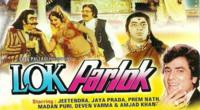
Ghar Ghar Ki Kahani (1988) Full HD Movie Download
.jpg)
Aandhi Toofan Full HD Movie Download

Kanku Ni Kimat Full HD Movie Download
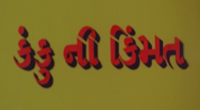
Mitti Wajaan Maardi Full HD Movie Download

Babbi Abbai Full HD Movie Download
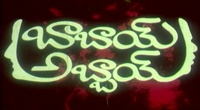
Saptapadi Full HD Movie Download
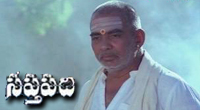
Crime Story Full HD Movie Download

Poovilanghu Full HD Movie Download

Swami Ayyappa- Shabari Malae Full HD Movie Download

Samadhi Full HD Movie Download

Sundarimare Sookshikkuka Full HD Movie Download

Pushpalatha Neti Poratam Full HD Movie Download
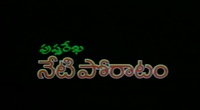
Maarina Manishi Full HD Movie Download
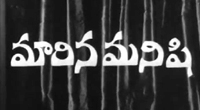
Mandupatara Full HD Movie Download

Tarzan Veerudu Full HD Movie Download

Mannan Full HD Movie Download

Download latest Movie from bollywood
- 1> baaghi 3
- 2> THE SKY IS PINK MOVIE FULL STORY AND REVIEW
- 3> Luka Chuppi
- 4> TO ALL THE BOYS I’VE LOVED BEFORE
- 5> Kabir Singh
- 6> Street Dancer 3D
- 7> Simmba
- 8> Gone Girl
- 9> The Girl Who Lived
- 10> Ludo
- 11> DILWALE DULHANIA LE JAYENGE
- 12> GUILTY
- 13> The Godfather
- 14> Adventures of Rusty
- 15> Sooryavanshi
- 16> Satyameva Jayate 2
- 17> Thappad
- 18> Bhool Bhulaiyaa 2
- 19> KGFChapter 2
- 20> Mardaani 2
- 21> Pinjar
- 22> Shivaji maharaj
- 23> Ek Villian 2
- 24> Hungama 2
- 25> Divergent
- 26> Mumbai Saga
- 27> The Internship
- 28> HIT (telugu)
- 29> Panga
- 30> The perfect date
- 31> 16 December
- 32> Gopala Gopala (Telugu)
- 33> Brahmastra
- 34> Gangubai Kathiawadi
- 35> Manmadhudu
- 36> Nenu local
- 37> Mahanati
- 38> Shatamanam bavathi
- 39> Lagaan
- 40> After
- 41> MOM
- 42> Shamshera
- 43> Raguvaran BTech
- 44> Khakee
- 45> The villain
- 46> OM
- 47> Mr. perfect
- 48> Bueatifull mind
- 49> Hichki
- 50> Gabbar Singh
- 51> Jogi
- 52> Before Sunrise
- 53> Before Sunset
- 54> Before Midnight
- 55> The Big Bull
- 56> Top Gun: Maverick
- 57> The Purge
- 58> The Sky is Pink
- 59> Laxmmi Bomb
- 60> Sadak 2
- 61> Sufna
- 62> Prithviraj
- 63> PK
- 64> Coolie No 1(2020)
- 65> Black Widow
- 66> Dear Zindagi
- 67> Dil Bechara
- 68> PHIR HERA PHERI
- 69> WAR
- 70> Dostana
- 71> RRR: Roudram Ranam Rudhiram
- 72> Maidan
- 73> Dabbang 3
- 74> Chhalaang
- 75> life as we know it
- 76> SherShaah
- 77> Sandeep Aur Pinky Faraar
- 78> Event Horizon
- 79> 83
- 80> Radhe: Your Most Wanted Bhai
- 81> Gunjan Saxena: The Kargil Girl
- 82> Mr India
- 83> Vivah
- 84> Anokha Bandhan
- 85> Ghost
- 86> Bhoot: Part One - The Haunted Ship
- 87> Haseen Dilruba
- 88> Laal Singh Chaddha
- 89> Qismat
- 90> Rajput
- 91> Drive
- 92> Dil Chahta Hai
- 93> Dil Ki Baazi
- 94> Dil Ka Rishta
- 95> Teesri Manzil
- 96> Dil
- 97> Love Aaj Kal
- 98> Khaali Peeli
- 99> Bunty Aur Babli 2
- 100> Atrangi Re
- 101> Gulabo Sitabo
- 102> Jodi
- 103> Suraj Pe Mangal Bhari
- 104> Deewana
- 105> Attack
- 106> Sardar Udham Singh
- 107> Toofan
- 108> THE LOVEBIRDS
- 109> Jersey
- 110> Ginny Weds Sunny
- 111> Thalaivi
- 112> Shiddat
- 113> Angels vs Zombies
- 114> Koi Mil Gya
- 115> Thank God
- 116> Bhuj: The Pride of India
- 117> Hum Aapke Hain Kaun
- 118> The Platform
- 119> Bird Box
- 120> Roohi Afzana
- 121> Torbaaz
- 122> Nikamma
- 123> World War Z
- 124> Extraction
- 125> Train to Busan
- 126> Life of Pi
- 127> SHAADI MEIN JROOR AANA
- 128> Himmat Aur Mehnat
- 129> To All The Boys: P.S. I Still Love You
- 130> Mimi
- 131> Good Newwz
- 132> Shubh Mangal Zyada Saavdhan
- 133> Raabta
- 134> Harry Potter and the Philosopher's Stone
- 135> Harry Potter and the Chamber of Secrets
- 136> Chhapaak
- 137> War of the Worlds
- 138> Harry Potter and the Prisoner of Azkaban
- 139> Harry Potter and the Goblet of Fire
- 140> MURDER MYSTERY
- 141> Shakuntala Devi
- 142> Bachchan Pandey
- 143> Jayeshbhai Jordar
- 144> Sheer Qorma
- 145> Saina
- 146> 'O' Pushpa I hate tears
- 147> Kedarnath
- 148> MS Dhoni The Untold Story
- 149> Chhichhore
- 150> Badhaai Ho
- 151> Unstoppable
- 152> Oz the Great And Powerful
- 153> The Girl on the Train
- 154> Haathi Mere Saathi 2020
- 155> The Conjuring: The Devil Made Me Do It
- 156> Gandhi Se Pehle Gandhi
- 157> The Song of Scorpions
- 158> Srimanthudu
- 159> Hello Guru Prema Kosame
- 160> Beauty and The Beast
- 161> Black Panther
- 162> Charlie and the Chocolate Factory
- 163> Bole Chudiyan
- 164> Fidaa
- 165> Duvvada Jagannadham
- 166> Bruce Lee: The Fighter
- 167> Hyper
- 168> Yaara
- 169> Red (2020)
- 170> Shivam
- 171> That Is Mahalakshmi
- 172> Nishabdham
- 173> Aashram 2020 web series
- 174> Laxmii
- 175> Mismatched
- 176> STUDENT OF THE YEAR 2
- 177> NAIL POLISH
- 178> Ramprasad Ki Tehrvi
- 179> KAAGAZ
- 180> 12 o Clock
- 181> The Power
- 182> bolo hau
- 183> Tribhanga
- 184> JAMUN
- 185> Madam Chief Minister
- 186> Maasaab
- 187> Aadhaar
- 188> Tanhaji
- 189> Bhaagi 3
- 190> Bhootnath
- 191> MALANG
- 192> Jai Mummy Di
- 193> Haathi Mere Saathi 2021
- 194> Shakeela
- 195> Unpaused
- 196> Annayya
- 197> Vamsoddharakudu
- 198> Mrugaraju
- 199> Narasimha Naidu
- 200> Sankranti
- 201> Manasu Maata Vinadhu
- 202> Anjaane
- 203> Apaharan
- 204> Bachke Rehna Re Baba
- 205> Bewafaa
- 206> Roohi
- 207> Radhe
- 208> Zindagi Khoobsoorat Hai
- 209> Yeh Mohabbat Hai
- 210> Yeh Kya Ho Raha Hai?
- 211> The Tomorrow War
- 212> DehradunDiary
- 213> Meri Shaadi Karaoo
- 214> Matruu Ki Bijlee Ka Mandola
- 215> No One Killed Jesica
- 216> Aag Ka Goola
- 217> Eight Million Dollars
- 218> Three Hundred
- 219> Cats and Dog
- 220> Decoy
- 221> Gold Rush
- 222> You Have Got Mail
- 223> Final Destination three
- 224> Tofan
- 225> Jungle
Request for Download movie Surya
- Bollywood movies
- Latest Bollywood movies
- Download all bengali movies
- Download all bhojpuri movies
- Download all english movies
- Download all gujarati movies
- Download all hindi movies
- Download all kannada movies
- Download all malayalam movies
- Download all marathi movies
- Download all oriya movies
- Download all punjabi movies
- Download all tamil movies
- Download all telugu movies
- Bollywood action movies
- Bollywood adventure movies
- Bollywood animation movies
- Bollywood classical movies
- Bollywood comedy movies
- Bollywood crime movies
- Bollywood devotional movies
- Bollywood documentary movies
- Bollywood drama movies
- Bollywood family movies
- Bollywood fantasy movies
- Bollywood historical movies
- Bollywood history movies
- Bollywood horror movies
- Bollywood musical movies
- Bollywood mystery movies
- Bollywood mythological movies
- Bollywood patriotic movies
- Bollywood romance movies
- Bollywood romantic movies
- Bollywood sci-fi movies
- Bollywood social movies
- Bollywood spiritual movies
- Bollywood sports movies
- Bollywood suspense movies
- Bollywood thriller movies
- Bollywood war movies
- Hot actress list
- Hot gujarati actress list
- Hot tamil actress list
- Hot bhojpuri actress list
- Hot assam actress list
- Hot bihari actress list
- Hot jammu and kashmir actress list
- Hot gujarati actress list
- Hot haryana actress list
- Hot konkani actress list
- Hot marathi actress list
- Hot odia actress list
- Hot punjabi actress list
- Hot rajasthani actress list
- Hot kannada actress list
- Hot malayalam actress list
- Hot telugu actress list
- Hot tulu actress list
- Hot Actress list from Indian city
- Hot actress list from ahmedabad
- Hot actress list from alappuzha
- Hot actress list from bangalore
- Hot actress list from bangalore
- Hot actress list from bhopal
- Hot actress list from chandigarh
- Hot actress list from chennai
- Hot actress list from guwahati
- Hot actress list from hyderabad, india
- Hot actress list from indore
- Hot actress list from jaipur
- Hot actress list from kannur
- Hot actress list from kochi
- Hot actress list from kolkata
- Hot actress list from kollam
- Hot actress list from kottayam
- Hot actress list from kozhikode
- Hot actress list from lucknow
- Hot actress list from madurai
- Hot actress list from mangalore
- Hot actress list from mumbai
- Hot actress list from mysore
- Hot actress list from new delhi
- Hot actress list from patna
- Hot actress list from pune
- Hot actress list from thiruvananthapuram
- Hot actress list from thrissur
- Hot actress list from tiruchirappalli
- Hot actress list from vijayawada
- Hot actress list from visakhapatnam
- All Bollywood Movies
- Bollywood Celeb
- >Art Director
- >Audiography
- >Background Music
- >Banner
- >Choreographer
- >Cinematographer
- >Costume Designer
- >Dialogue Writer
- >Director
- >Distributor
- >Editor
- >Executive Producer
- >Hair Stylist
- >Lyricist
- >Music Director
- >Photographer
- >Playback Singers
- >Presenter
- >Producer
- >Production Company
- >Production Designer
- >Screenplay
- >Singer
- >Sound
- >Actor
- >Story Writer
- >Studio
- >Video Director
- >Miscellaneous
- >Publicity (pro)
- >Web Creator
- >Production Labs
- >Publicity Design
- >Publicity Stills
- >Writer
- >Miscellaneous Artists
- >Visual Effects
- >Reporter
- >Music Company
- >Shooting Studios
- >Picturised On
- >Line Producer
- >Co Producer
- >Asst Director
- >Casting Director
- >Cinematography
- >Choreography
- >Dialouge
- >Editing
- >Lyrics
- >Music
- >Story
- >Playback Singer Female
- >Playback Singer Male
- >Actor In A Comic Role (male/female)
- >Child Artiste
- >Ensemble Cast
- >Actor Popular Choice (male)
- >Actor Popular Choice (female)
- >Sa Re Ga Ma Pa Song Of The Year
- >Actor In Supporting Role
- >Actress In Supporting Role
- >Actor In Leading Role
- >Art Direction
- >Actress In Leading Role
- >Sound Recording
- >Costume Design
- >Special Effects
- >Action
- >Actor In A Negative Role
- >Lifetime Achievement Award
- >Cinematic Exellence (director)
- >Cinematic Exellence (male)
- >Cinematic Exellence (female)
- >International Male Icon
- >International Female Icon
- >Actor In A Supporting Role (male)
- >Actor In A Supporting Role (female)
- >Actor In A Comic Role
- >Playback Singer (male)
- >Playback Singer (female)
- >Most Promising Debut (female)
- >Most Promising Debut (male)
- >Most Promising Director
- >Sound Design
- >Lifetime Jodi
- >Marketed Film
- >Jury Award For Best Actor
- >Jury Award For Best Actress
- >Jury Award For Best Film
- >Jury Award For Best Director
- >Playback Singer(male)
- >Lifetime Acheivement Award (male)
- >Excellence Award
- >Jodi Award
- >Performer Of The Year
- >Presented By
